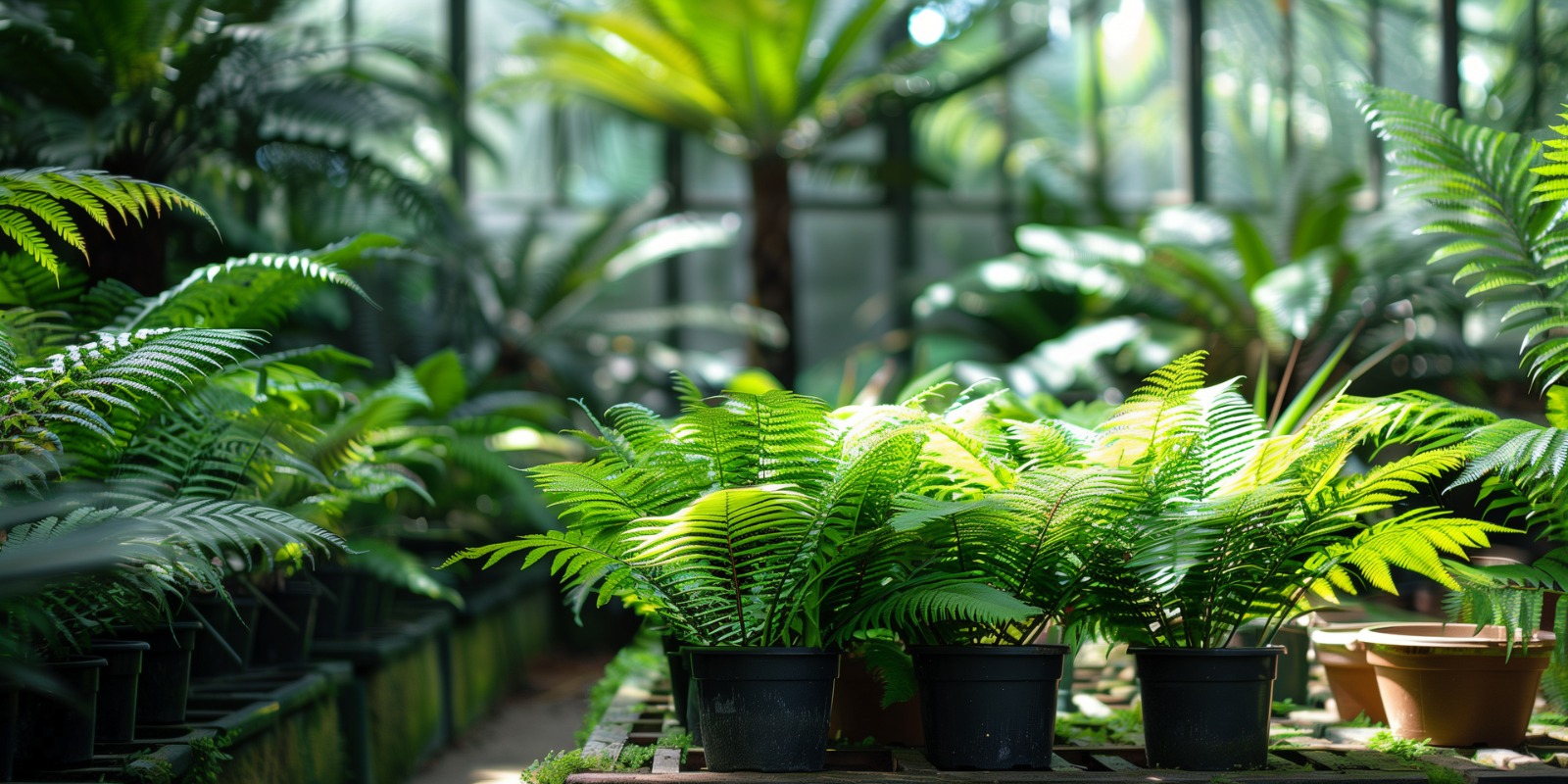
Ferns are considered one of the oldest plant species, dating back millions of years. These lush ornamental plants can tolerate low light and low maintenance. Their graceful fronds and unique ability to thrive in various indoor environments make them a favourite among indoor plant enthusiasts and growers.
Ferns come in many different varieties and can be kept outdoors or indoors under low-light conditions.
Let's examine the top five easy-to-care species of ferns and their characteristics and how to keep them healthy, vibrant, and green.
What are Ferns? A Brief History
Ferns are vascular plants that reproduce through spores rather than seeds and flowers. They are known to have survived mass extinctions 360 million years ago and have evolved into many stunning varieties today.
They are found in every continent except Antarctica. Mostly they can be found in dense rainforests and rocky crevices.
Why Are Ferns Loved?
Ferns have a timeless appeal that transcends trends, making them a perfect complement to modern, minimalist, or bohemian interiors. Their delicate, feathery fronds add a soft, natural touch to any room. Moreover, their versatility and ability to thrive in most indoor environments are suitable for both beginners and seasoned gardeners.
Where Can You See Ferns?
Ferns can be found in various habitats, from temperate woodlands to tropical rainforests. Due to their intricate foliage, most public gardens and greenhouses have a collection of ferns, which often act as the focal point in such spaces.
Ferns naturally grow in the wild, in damp, shaded areas like forest beds, riversides, and waterfalls.
Top 5 Indoor Ferns
1) Boston Fern (Nephrolepis exaltata)
Boston Ferns are one of the best, easiest indoor plants. They show off long, arching fronds filled with tiny leaflets. They have lush, bright green foliage and a fuller appearance, making them a favourite choice for hanging baskets or plant stands indoors. They are easy to care for and thrive in relaxed environments. They also have air-purifying qualities and can be a great addition to your space.
2) Bird's Nest Fern (Asplenium nidus)
The Bird's Nest Fern is another favourite among fern lovers. Its broad, sword-like fronds grow in a rosette shape similar to a bird's nest. Due to its attractive tropical look, it also makes a great statement piece indoors. It is a sun-loving fern known for being more forgiving than other fern varieties and can tolerate less humidity and direct sunlight. It is important not to confuse this smaller species with the much larger species of Asplenium australasicum, mainly grown outdoors as a specimen plant.
3) Asparagus Fern (Foxtail Fern)
Despite its name, the Asparagus Fern or Foxtail Fern doesn't belong to the Fern family but to the Liliaceae family. It is almost fernlike, sharing the same feathery aesthetic and exhibiting the same characteristics. It's called foxtail fern because of its bushy appearance. It's a hardy plant able to tolerate both bright, indirect sunlight and partial shade, making it ideal for various indoor settings.
4) Maidenhair Fern (Adiantum tenerum; Adiantum capillus-veneris)
Maidenhair Ferns have delicate lacelike fronds and cascading leaves that grow in a fan pattern. They are often grown in hanging planters or pots on high shelves. Maidenhair ferns can be finicky; hence, it's best to place them in a place with consistent humidity and provide enough moisture. They are also known as sun-loving ferns, as they can thrive in morning sun locations with adequate moisture.
5) Button Fern (Pellaea rotundifolia)
The Button Fern is a low-growing fern with round, leathery leaves that resemble buttons. Due to its small size and tidy growth habit, it looks gorgeous on tabletops.
This drought-tolerant fern is an excellent low-light, low-maintenance plant for busy plant enthusiasts.
How to Grow and Care for Indoor Ferns
Choose the Right Soil for Your Ferns
Using soil that drains appropriately is crucial for growing ferns indoors. Because fern roots are prone to rot, they require soil that retains moisture without getting soggy. A good combination is perlite or peat moss combined with ordinary potting soil. This keeps the plant sufficiently moist while letting extra water run off to avoid damaging the roots.
Provide the Ideal Lighting Conditions
Ferns are ideal for spaces that receive indirect sunlight because they usually flourish in mild light levels.
The delicate fronds of your ferns may be scorched if placed in direct sunlight. A location close to a window is ideal for species like the Boston Fern or Bird's Nest Fern as they can both tolerate morning to mid-morning direct sun conditions.
Keep the Soil Moist—but Not Too Wet!
Although ferns enjoy wetness, giving them too much water might harm their health. The soil must be continuously moistened without becoming saturated. Water your ferns when the top 2 centimetres of soil feel dry to the touch. Always choose a pot with drainage holes to avoid water sitting at the bottom, which can lead to root rot.
Increase Humidity by Misting Occasionally
Because they are adapted to wet climates, ferns benefit from more moisture in the air. To keep the fronds from drying out and the leaves looking fresh, mist them once or twice a week. Placing your fern on a humidity tray or close to a humidifier can also help simulate its natural circumstances.
FAQs About Indoor Ferns
Is direct sunlight necessary for fern growth?
No, indirect sunlight is usually preferred for ferns. Their fragile leaves may burn if they are exposed to direct sunlight. The ideal light levels for them are medium to low. However, some sun-loving ferns may thrive in direct sunlight with enough moisture.
How frequently should my fern be watered?
Consistently damp but not saturated soil is ideal for ferns. Water the soil when its top 2 centimetres feel dry. The fragile fronds of some fern species, such as the Maidenhair fern, may require more frequent watering.
Can low light levels support the growth of ferns?
Indeed, many ferns, including the Button and Boston ferns, make great low-light, low-maintenance plants. These ferns are ideal for homes with little sunshine since they may flourish in places with little natural light.
Where can I buy ferns in my area?
Numerous ferns are available in nearby nurseries, plant stores, or online plant marketplaces. You might look into an online nursery in Australia that sells a variety of indoor plants, including ferns.
Are ferns simple to care for?
Although ferns need more care than other indoor plants, many species are manageable, mainly if you can reliably control their humidity and moisture content. Some of the easiest indoor ferns for novices are Button Ferns and Bird's Nest Ferns.
Adding indoor ferns to your indoor plant collection will allow you to enjoy the fresh air and the visual appeal of their delicate fronds. Make the perfect choice, adhere to these maintenance guidelines, and see your ferns flourish in your house for many years!
PlantArk is an Australian plant marketplace where you can purchase and sell plants and seeds. Check regularly to see if your favourite plants are available for purchase.


